
- Home
- India
- World
- Premium
- THE FEDERAL SPECIAL
- Analysis
- States
- Perspective
- Videos
- Sports
- Education
- Entertainment
- Elections
- Features
- Health
- Business
- Series
- In memoriam: Sheikh Mujibur Rahman
- Bishnoi's Men
- NEET TANGLE
- Economy Series
- Earth Day
- Kashmir’s Frozen Turbulence
- India@75
- The legend of Ramjanmabhoomi
- Liberalisation@30
- How to tame a dragon
- Celebrating biodiversity
- Farm Matters
- 50 days of solitude
- Bringing Migrants Home
- Budget 2020
- Jharkhand Votes
- The Federal Investigates
- The Federal Impact
- Vanishing Sand
- Gandhi @ 150
- Andhra Today
- Field report
- Operation Gulmarg
- Pandemic @1 Mn in India
- The Federal Year-End
- The Zero Year
- Science
- Brand studio
- Newsletter
- Elections 2024
- Events
A tale of lost villages and tribal poverty under the grandeur of Statue of Unity

About 500 metres from the 597-foot-tall Statue of Unity in Narmada district, used to stand six huts that were part of Kevadia, a sleepy village in Narmada district of Gujarat.Kevadia, on top of the hill along the Narmada river, was once home to about 50 tribal families. Surrounded by pristine forest on two sides, Narmada river on one and the Sardar Sarovar Dam on the other, were six...
About 500 metres from the 597-foot-tall Statue of Unity in Narmada district, used to stand six huts that were part of Kevadia, a sleepy village in Narmada district of Gujarat.
Kevadia, on top of the hill along the Narmada river, was once home to about 50 tribal families. Surrounded by pristine forest on two sides, Narmada river on one and the Sardar Sarovar Dam on the other, were six other villages —Navagam, Waghariya, Limdi, Kevadia, Kothi and Gora that surrounded Kevadia village. At one end of the Kevadia village near the Sardar Sarovar Dam was Sadu Bet, a place of worship for the local tribals.
Together they formed Limdi group gram panchayat, predominantly inhabited by Tadvi, a sub community of tribals.
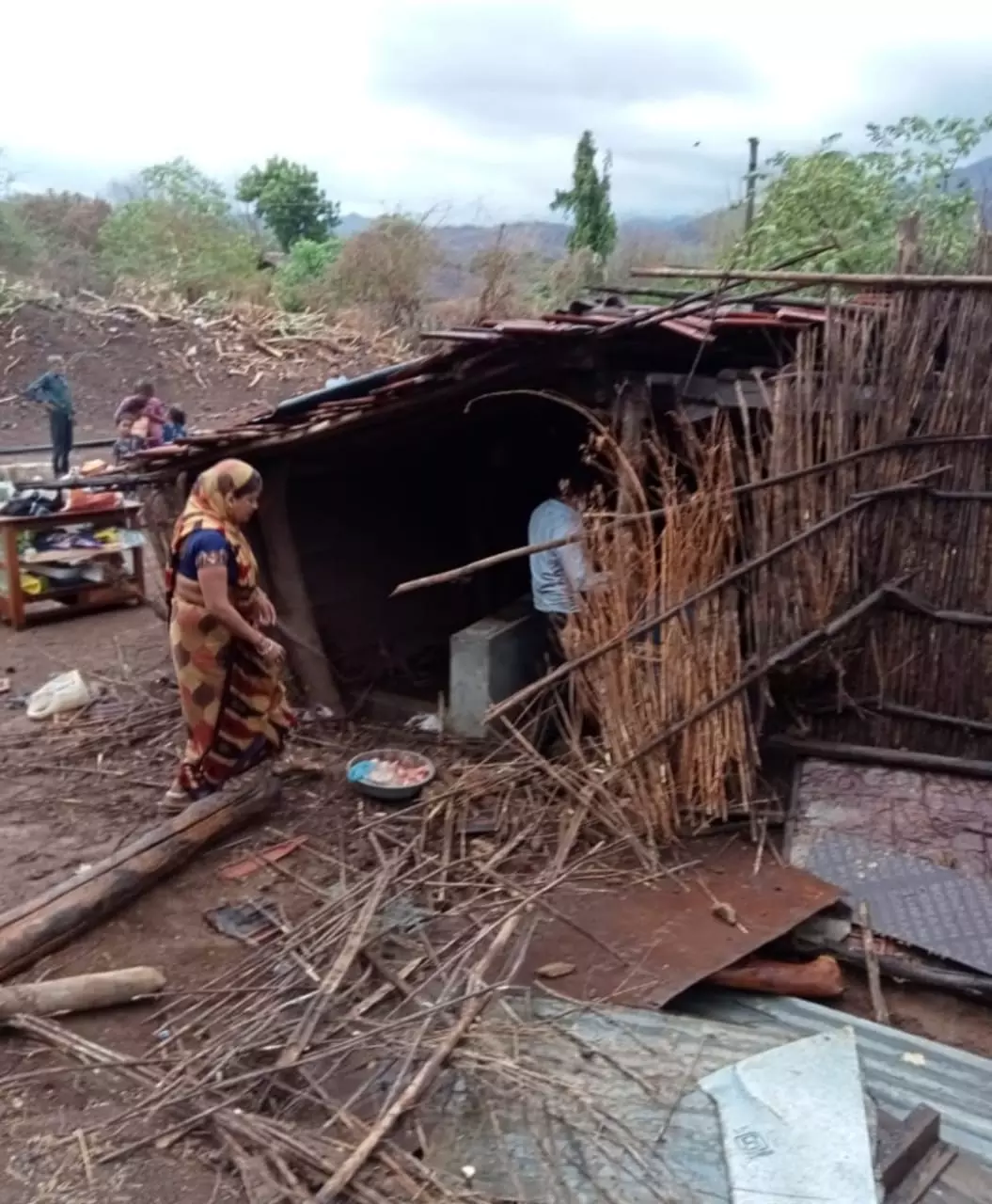
Tribals of Kevadia protesting in 2019.
Kevadia village has now been replaced by swanky new township — Ekta Nagar, and Sadhu Bet became the spot for construction of the world’s tallest statue - the Statue of Unity – a 597 feet statue of Sardar Vallabhbhai Patel that cost around Rs 3,000 crore.
From Kevadia to Ekta Nagar
Since 2018, the Gujarat government has transformed the lost tribal villages into Ekta Nagar, as visioned by Prime Minister Narendra Modi.
Ekta Nagar is now a modern township amidst the underdeveloped Narmada district that was built around the Statue of Unity with a budget of whopping Rs 4,000 crore since 2018.
Noticeably, after the Statue of Unity was inaugurated in 2018, the area was initially named Kevadiya Colony that had four-lane roads leading up to the statue, Sreshtha Bhawans designated for dignitaries from other states, a helipad, a flower park and a boating facility downstream of Narmada river.
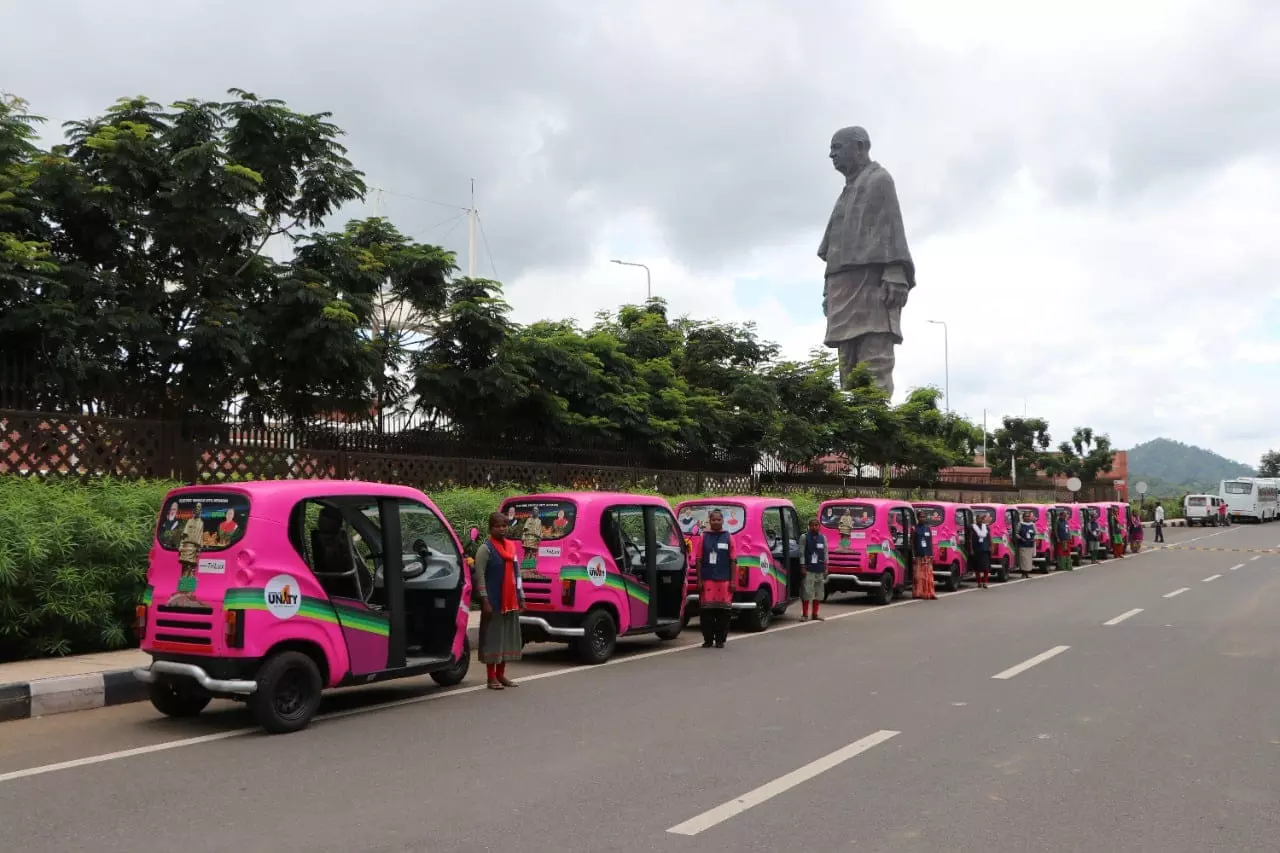
The four-lane road that leads up to the Statue of Unity.
Following the inauguration of the project in 2018, the Gujarat government created a new post for Kevadia Colony – Chief Administrator for the administration of the township that would no longer be under the jurisdiction of the district administration of Narmada.
However, in January 2022, Kevadia Colony got renamed to Ekta Nagar when Narendra Modi inaugurated the new dedicated railway station for the township.
In 2021, Modi flagged off eight train services connecting Ekta Nagar to Varanasi, Dadar, Ahmedabad, Delhi, Rewa, Chennai and Pratapgadh.
The same year, government invited several international hospitality groups to build hotels there. By the end of 2023, Ekta Nagar witnessed Wyndham group, Radisson group and Reliance group come up with five star hotels along with at least 20 resorts.
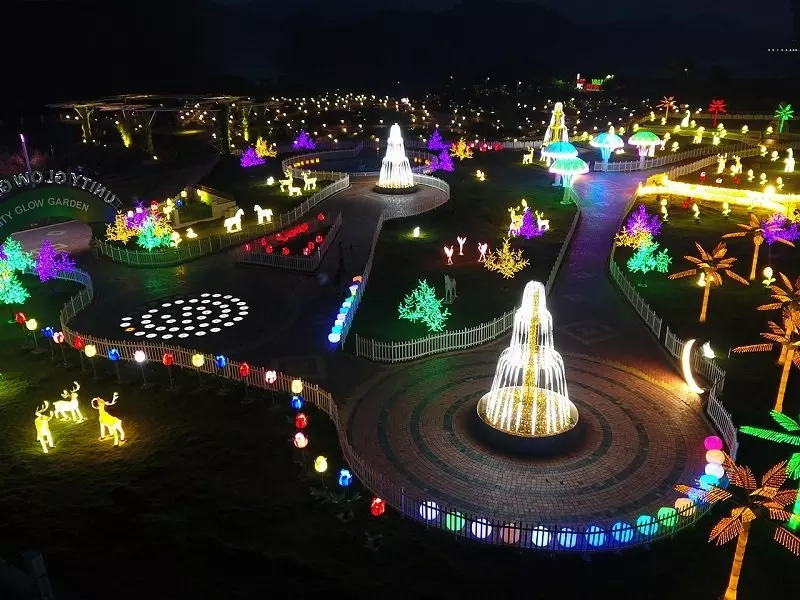
The Unity Glow Garden in Kevadia Nagar.
The following year, Prime Minister Modi flagged off projects worth Rs 284 crore in Ekta Nagar including a walkway from bus bay to view point near the statue, 4 MW solar panels, a sub district hospital, four fountain circles, phase one of the smart bus stops, services of ICCU on wheels, push button pedestrian crossing, phase two of beautification of the road to the helipad, some stone sculptures, a car parking, a bonsai park, sewage treatment plant and fire staff quarters of Ekta Nagar’s own dedicated fire brigade.
In February 2024, Bhupendra Patel-led BJP government, announced that Ekta Nagar would get its own airport despite the nearest airport being at around 90 kilometre in Vadodara district.
Within a month, land was identified for a 3,000 metre runway in Kherkuva, Bhadarva and Sureva villages of Tilakwada taluka in Narmada district near Ekta Nagar.
A week later, Gujarat Finance Minister Kanubhai Patel announced a budget of Rs 475 crore for tourism and upkeep of Ekta Nagar and an additional Rs 100 crore for construction of road. However, there was no mention of compensation for the tribals displaced due to the grand project.
“When the process to acquire land began in 2018, the tribals were up in arms and vehemently refused to give away their land. However, the government used various means of force to grab the tribal land amid protests that continued till 2020. For two years, the area was a conflict zone with police lathi charging on protesting tribals and arresting them indiscriminately. Narmada police would come and demolish homes and raze villages to ground but tribals would make a makeshift shanty on the spot, refusing to leave their ancestral village. Finally, in early 2020, some of the villagers were called for a meeting by the then district collector. Villagers were offered compensation and assured that the excess land after the project is completed will be returned to the original owners. They were also promise jobs in the project. But none of the promises were fulfilled. The projects never stopped. First, it was the statue, then the government announced flower park and four-lane road. After six years, the area is unrecognisable with modern amenities and separate administration,” tells Praful Vasava, a tribal rights activist from Narmada.
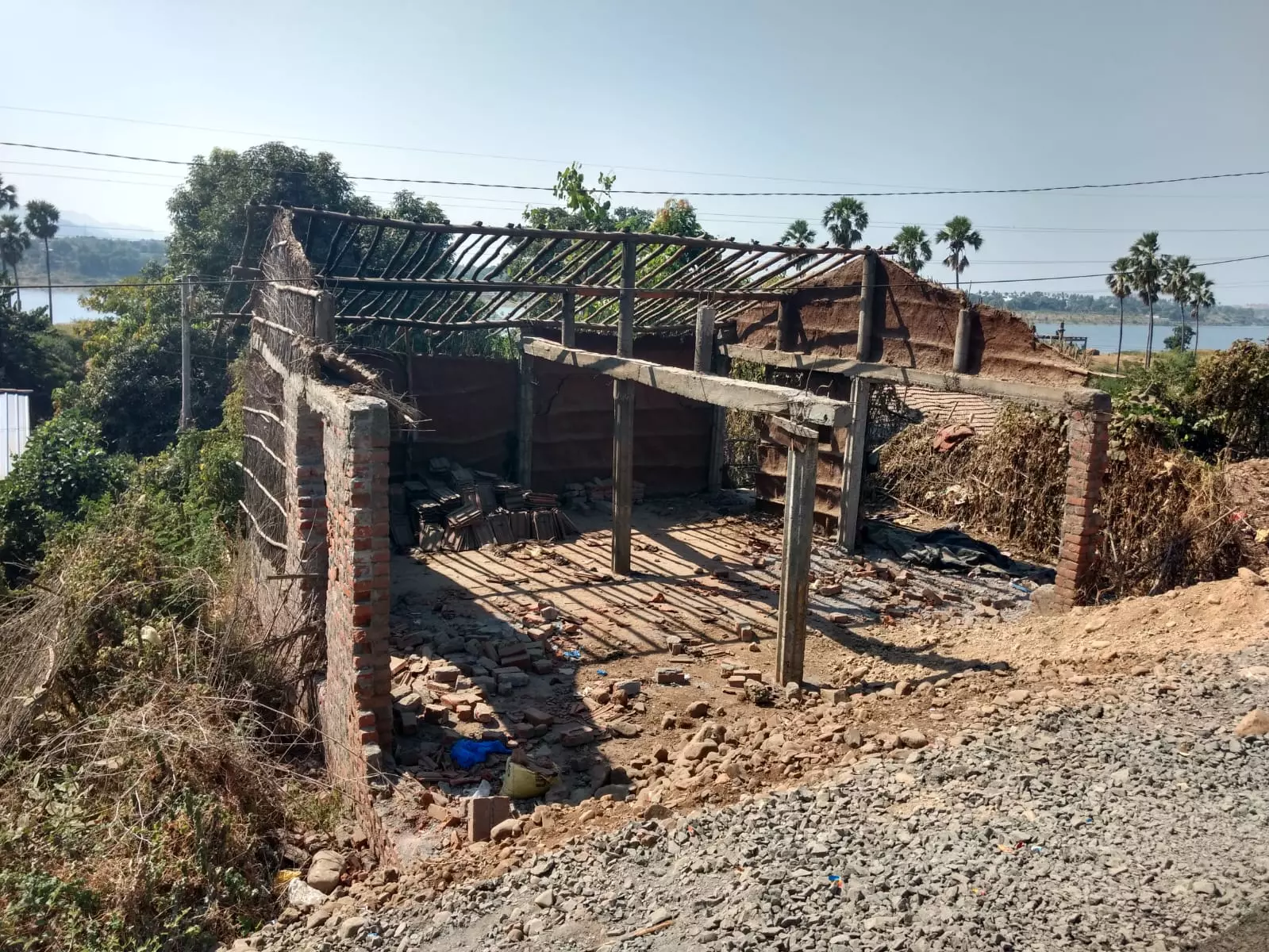
The remains of a house in Kevadia that was demolished in 2018.
“Reportedly, the Gujarat government is now mulling a posh residential colony on the remaining 1,000 acres around the project where plots will be sold for holiday homes and farmhouses,” added Vasava.
“The irony is that government chose an area of Narmada district for the multi crore project. It is one of the poorest districts of the state that lacks basic amenities like hospitals, schools and roads,” he tells.
Noticeably, Narmada district where tribals form 87% of the population, was formed in 1997 out of Dediyapada, Nandod and Saghbara talukas carved out of Bharuch district and Tilakwada taluka carved out of Vadodara district.
Since its formation, the district has had no government hospital with modern amenities and tribals are referred to Vadodara, a district about 90 kilometres from Narmada. The villages of Narmada still await PHCs, schools and roads. The district also tops the state in number of anaemic pregnant women and malnutrition amongst children as per the 2022 Niti Aayog report.
Lost homes and villages
“We lost our home and about 40 acres of farm land in Navagam in 2018. Nobody told us that water is being released from the dam before the inauguration of the statue on October 31, 2018. We helplessly witnessed the water level rise by the hour and land submerging gradually along with cultivated crops on our land and then our home,” Ambaben, former sarpanch of Limdi group gram panchayat, said.
Navagam is one of those villages that submerged as water rose in the weir (a barrier across the width of a river that controls the flow of the river and usually results in a change in the river level) of Narmada river and yet it has not been listed as ‘project affected’ by the Gujarat government.
Noticeably, Navagam was not the only village that was a collateral damage to the Statue of Unity project. Five other villages — Waghariya, Limdi, Kevadia, Kothi and Gora — also drowned completely as the government released water in the Garudeshwar weir downstream of Narmada for the proposed boating facility.
There were 11 other villages that lost land to the Gadureshwar weir partially.
“We have been living on the outskirts of a village between Narmada and Vadodara districts along the highway since 2018. We have had to change several locations over the last six years. Every six or seven months police demolishes our makeshift home to clear encroachment. We have no land or home now,” 65-year-old Ambaben tells The Federal.
“We did not just lose our home. We lost our ancestral village and with it our place of worship, our farm land, our cremation grounds and our history,” says Govindbhai Tadvi who was once a resident of Waghariya village.
Failed government promises
When the Statue of Unity project was announced in 2010 by the then chief Minister Narendra Modi, the tribals of Narmada and surrounding districts like Bharuch, Vapi staged a massive protest in Nandod taluka of Narmada. Under pressure, the government had then assured that the consent of the tribals would be taken before the work for the project begins.
As the work for statue began in 2013, the Limdi gram sabha passed a resolution rejecting handing over any land for the project under the Panchayat Extension to Scheduled Area (PESA) Act, under which the government cannot acquire tribal land without the nod of the gram sabha.
Following this, Ahmedabad-based environmentalist Mahesh Pandya filed a PIL in the High Court against the land acquisition in six villages around the Statue of Unity in Narmada district. In 2019, after several hearings in the case, the court stalled land acquisition for the project. Later in May 2020, court dismissed the PIL when government informed that it was not acquiring but leasing the land belonging to the tribals.
“The tribals were deceived by the government and made to believe they were not losing their land permanently. In 2022, the government leased out land belonging to Waghariya village for a Rs 200 crore hotel at a rate of Rs 1 crore for 100 years. The intention has never been to return the land to the tribals,” Mahesh Pandya told The Federal.
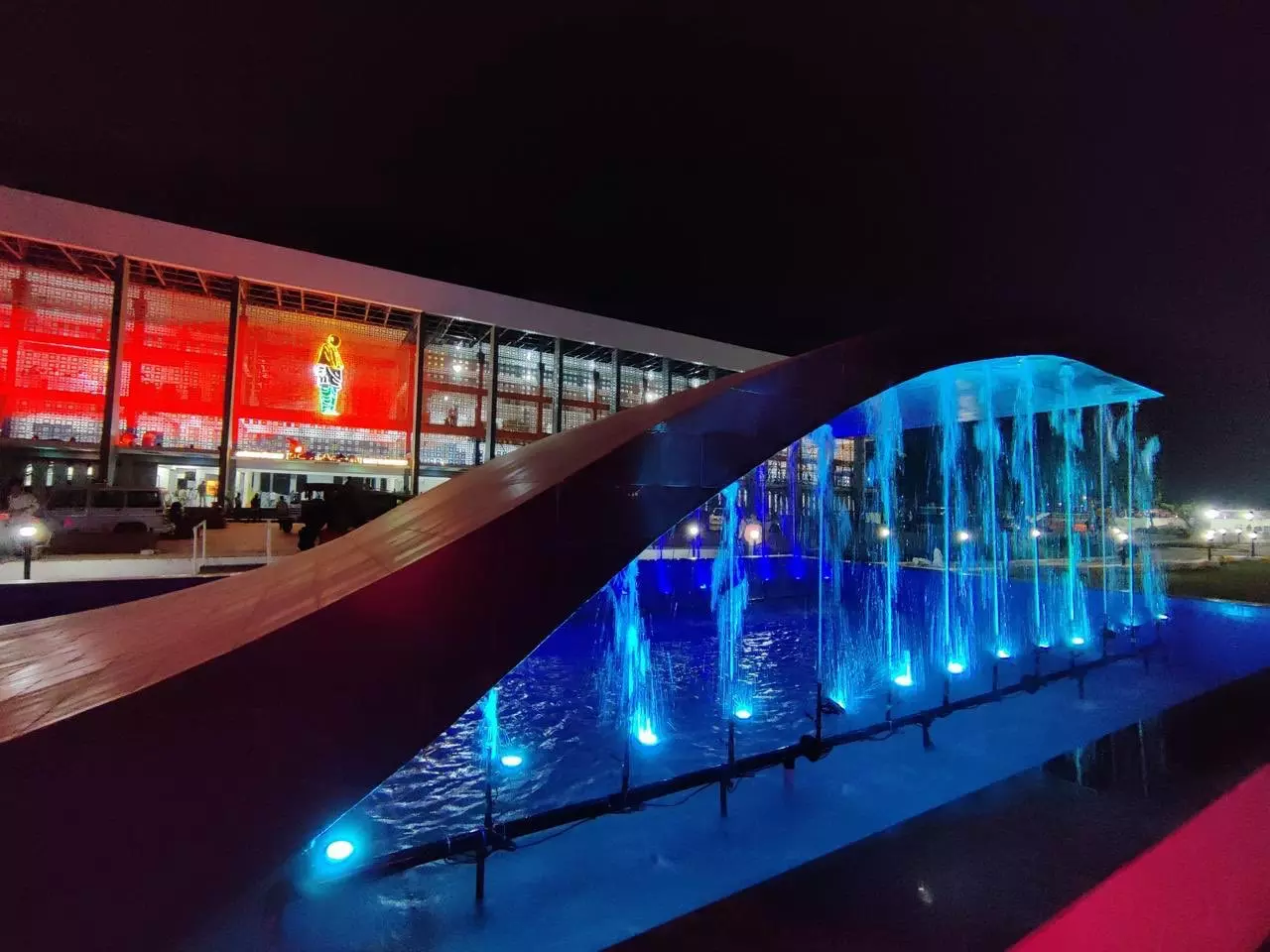
In January 2022, Kevadia Colony got renamed to Ekta Nagar when Narendra Modi inaugurated the new dedicated railway station for the township.
“The tribals went from being land owners and farmers to hawkers to jobless daily wage workers in the last six years,” adds Pandya.
Noticeably, tribals of Kevadia village who were closest to the statue and first ones to be evicted were told that the project would bring them income once completed and authorities would help them turn their homes into homestay for tourists.
“We were told that we will receive financial help to develop homestays in the villages and that we will benefit from the project. But when my son went to with a proposal for the same to the Statue of Unity Area Development and Tourism Governance Authority administrative body of Ekta Nagar, he was turned away,” says Narendra Tadvi, former resident of Kevadia village, who now lives near Daskroi taluka in Ahmedabad.
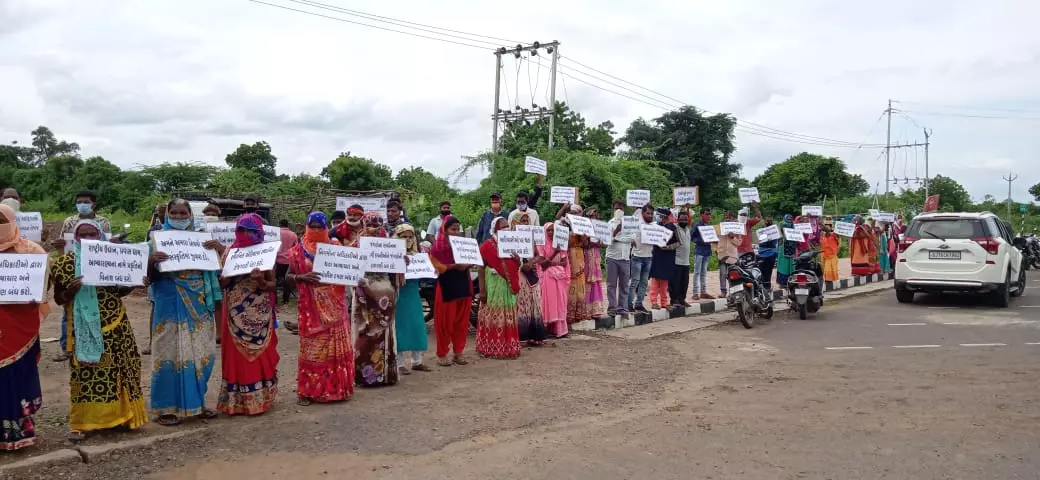
“Three days after my son visited the administrative office, we got an eviction notice to vacate our homes within a week. After we left Kevadia, we temporary settled in Waghariya village that had not completely submerged then. My son put up a tea stall near the statue. But officers came and removed his cart stating he did not have permission to put a cart in Ekta Nagar,” he shares.
“We were told we would get jobs once the project is complete. But only a handful of locals got jobs inside Ekta Nagar. They are cleaning staff, bus drivers among others, who have to show identity cards every day to enter Ekta Nagar. For the rest of us, our villages are off limits. We are encroachers in our own land now,” tells Govindbhai Tadvi, who was arrested in 2022 when he entered his farmland in Waghariya village.
